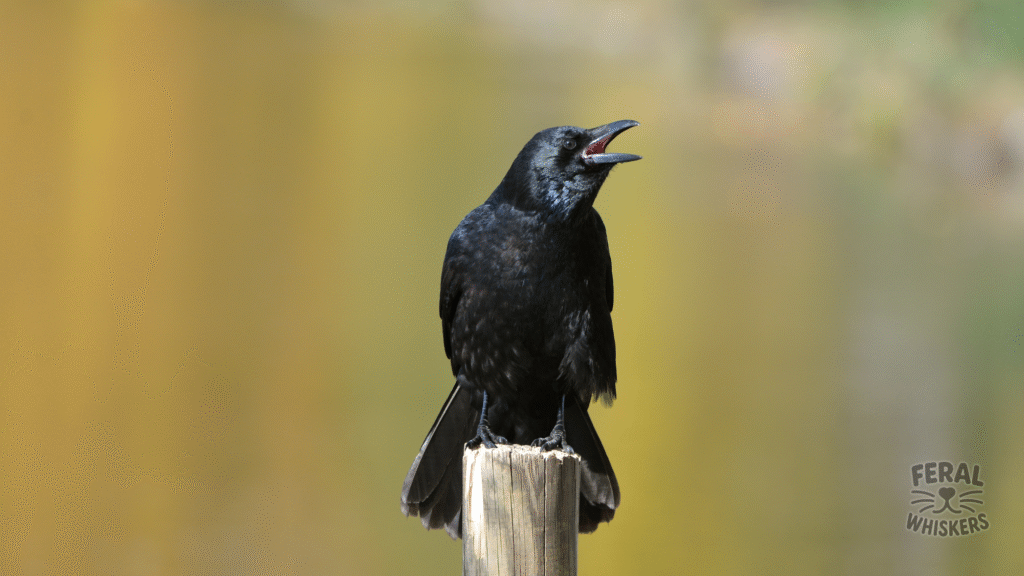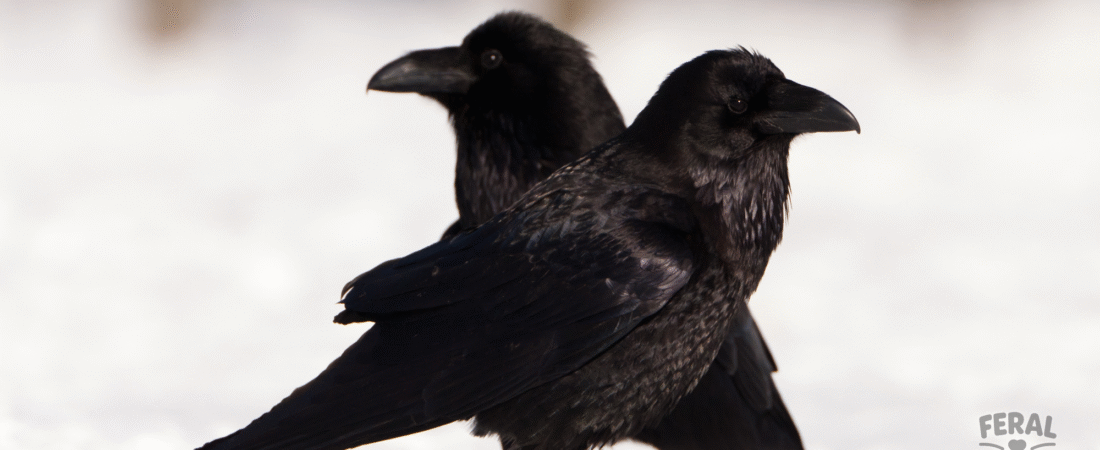Introduction: Fascination with Corvids

Ravens and crows belong to the corvid family, which also includes magpies, rooks, and jackdaws. They’re famous for their intelligence, problem‑solving, tool‑making abilities, and even a sense of play. Videos of friendly crows bringing people shiny gifts or ravens “talking” like parrots often spark curiosity:
👉 “Can I keep a crow or raven as a pet?”
The answer, in almost all of the U.S. (and many countries), is no — and for good reasons rooted in law, ethics, and practicality.
1. Legal Status of Crows and Ravens in the U.S.
- Protected Species: Both crows and ravens are protected under the Migratory Bird Treaty Act (MBTA).
- This makes it illegal to capture, keep, or possess them without a federal permit for scientific, rehabilitation, or educational purposes.
- Penalties: Violations can mean fines up to $15,000 and/or jail time.
- Permits: Only licensed wildlife rehabilitators, sanctuaries, or educational facilities may legally keep them.
2. Why They Don’t Make Good Pets
2.1 Intelligence Beyond Expectation
- Crows and ravens rank among the most intelligent birds in the world.
- They can remember faces, solve puzzles, hold grudges, and even teach others.
- Such intelligence makes them prone to boredom in captivity — leading to self‑destructive behaviors.
2.2 Social & Environmental Needs
- Wild corvids live in complex family groups. Loneliness or isolation in captivity is profoundly stressful.
- They require massive amounts of space, stimulating environments, and interaction that’s hard to replicate at home.
2.3 Diet & Health
- Omnivorous diet: insects, fruits, carrion, grains, and even small animals.
- Providing a varied natural diet daily is difficult without expert knowledge.
- Improper diets can cause malnutrition or metabolic disease.
2.4 Destructive Behavior
- They chew and tear apart objects — furniture, wires, even walls.
- Loud calls are unsuitable for apartments or close living spaces.
2.5 Longevity
- Crows in captivity may live 20 years, ravens even longer. Owning one would be a decades‑long legal and ethical responsibility.
3. Ethical Concerns
- Wild Freedom: Removing corvids from the wild robs them of natural behaviors like flying long distances, social flocking, or raising young.
- Intelligence Needs: Keeping them as pets is often compared to putting a genius in solitary confinement.
- Conservation Impact: While not globally endangered, local crow and raven populations play vital ecosystem roles as seed dispersers and scavengers.
4. What to Do if You Find an Injured Crow or Raven
- Do Not Attempt to Keep It.
It’s illegal and harmful. - Contact a Wildlife Rehabilitator.
- Search via Animal Help Now or call your state wildlife agency.
- Short‑Term Containment (if advised):
- Place in ventilated box lined with cloth/paper towel.
- Keep warm, dark, quiet.
- Do not feed or give water unless a rehabber instructs you.
5. Alternatives for Corvid Lovers
If you admire these brilliant birds:
- Support corvid research & conservation.
- Attract wild crows/ravens to your yard with bird‑safe food offerings (unsalted peanuts, seeds) and water sources.
- Volunteer at wildlife rehab centers to legally help rescued corvids.
- Observe & photograph them in the wild — ethical, enriching, and rewarding.
6. Fun Facts About Ravens & Crows
- Ravens can mimic human speech with surprising clarity (just like parrots).
- Crows remember human faces for years — and tell other crows who’s friend or foe.
- They have been observed using tools, like bending sticks to fish insects out of logs.
- Crows hold “funerals,” gathering quietly around dead flock members.
- Certain raven “tricks” (like sliding down snowy rooftops) seem to be pure play.
7. FAQs
Q1: Can I keep a crow as a pet if I rescue it as a chick?
No — it’s illegal under federal law without permits. Contact a licensed rehabilitator.
Q2: Can corvids talk like parrots?
Yes, ravens especially can mimic words and even laugh, but they don’t usually speak as clearly as parrots.
Q3: Are they endangered?
Globally, most crow and raven species are not endangered, but some regions face population pressures due to habitat loss or persecution.
Q4: What’s the difference between a crow and a raven?
- Size: Ravens are larger (up to 25″ wingspan vs. 17″ in crows).
- Tail Shape: Crows = fan‑shaped, Ravens = wedge‑shaped.
- Call: Crows make “caw” sounds, ravens make deep croaks.
Q5: Could they ever make good domesticated pets in the future?
Unlikely. Their behavior, intelligence, and needs make them unsuitable for domestication in household settings.
Final Takeaway
Ravens and crows are fascinating, brilliant birds that deserve admiration — but not ownership. Keeping them as pets is illegal, unethical, and impractical.
💡 The best way to enjoy them is to:
✔ Provide safe food/water in your yard.
✔ Support wildlife rehab centers.
✔ Observe and study them in their natural habitats.
Respecting their wildness is the greatest gift we can give to these remarkable creatures.

